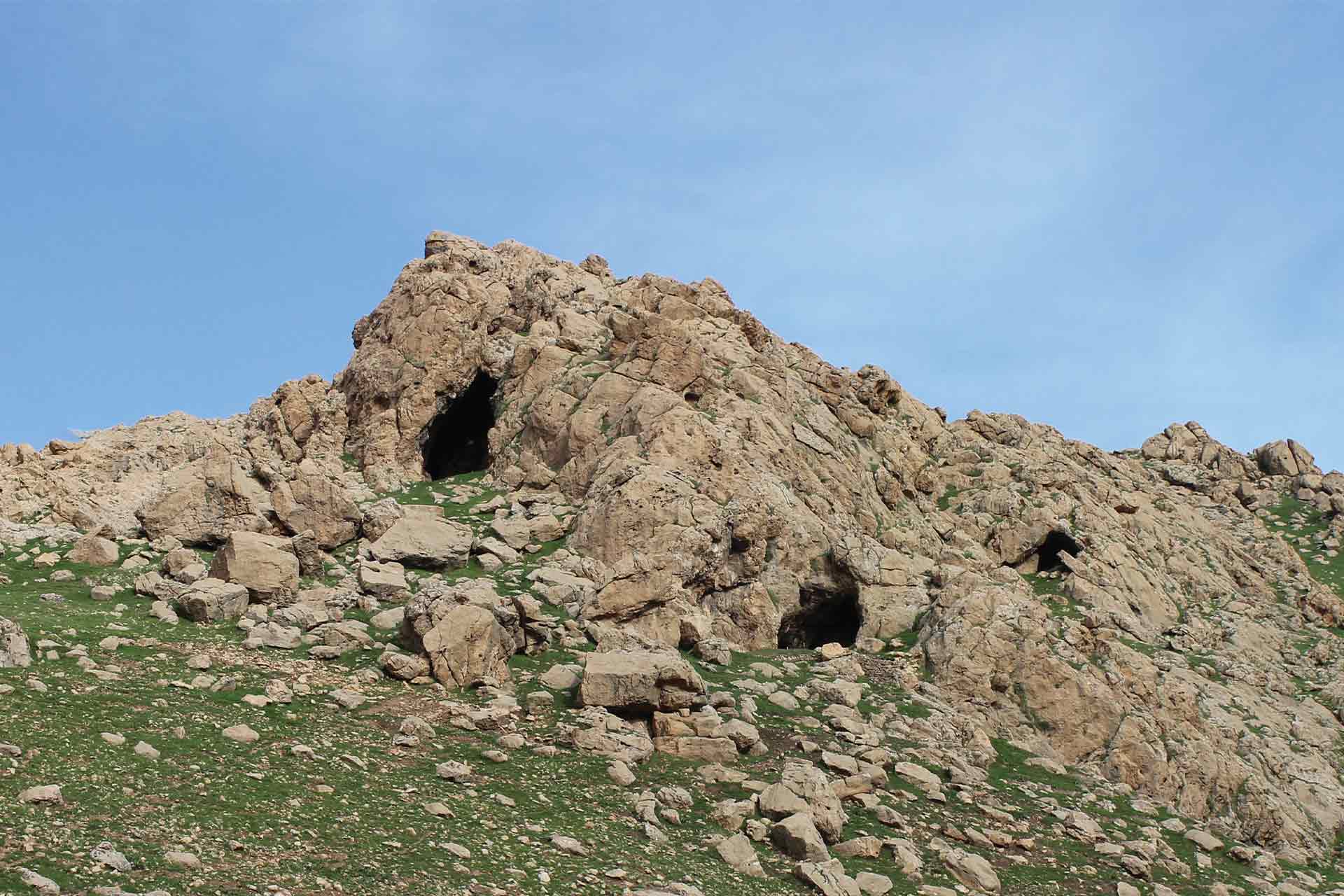Human Paleoecology
From late Palaeolithic hunter-gatherers to the first farmers, we study the impacts of environmental and climate change on past societies, the evolution of human foodways, vegetation ecology, plant uses and domestication, the transition from foraging to farming, and human health and kinship at the transition to farming. Our geographical focus is on the late Palaeolithic and Neolithic societies of Southwest Asia and the Mediterranean basin.
View of the Zagros Mountains, KRI (northern Iraq):

Palegawra cave complex, KRI (northern Iraq):

About this group
Fields of specialisation include archaeobotany and anthracology, human osteoarchaeology, stable isotopes, lithic analyses, material culture and settlement studies.
Staff
Ceren Kabukcu (Group lead)
Current research projects
- The Last Hunters of the Eastern Fertile Crescent: late Palaeolithic and early Neolithic Habitation and Palaeoenvironments in the northwest Zagros (LASTHUNTER project), Gerda Henkel Foundation, Germany, 2023-2025 (E Asouti, D Baird, C Kabukcu)
- What’s in a house? Exploring the kinship structure of the world’s first houses, Leverhulme Trust, UK, 2021-2025 (J Pearson, J-H Plug)
- Pınarbaşı Project (D Baird, J-H Plug)
- Mendik Project (Taş Tepeler) (D Baird, E Asouti, C Kabukcu)
- Karahantepe Project (Taş Tepeler) (Archaeobotany: C Kabukcu, E Asouti)
- Shanidar Cave Project (Archaeobotany: C Kabukcu, E Asouti).
Research collaborations
- Peter Akkermans (Leiden University, Netherlands)
- Çiler Altınbilek Algül (Istanbul University, Türkiye)
- British Institute at Ankara
- British Institute for the Study of Iraq
- Aslı Erim Özdoğan (Çanakkale Onsekiz Mart University, Türkiye)
- Andrew Fairbairn (Queensland University, Australia)
- Eva Fernandez-Dominguez (Durham University)
- Claudia Glatz (University of Glasgow)
- Necmi Karul (Istanbul University, Türkiye)
- Louise Martin (University College London)
- Gökhan Mustafaoğlu (Ankara Haci Bayram Veli University, Türkiye)
- Catherine Perlès (Université Paris Nanterre, France)
- Tobias Richter, Lisa Yeomans, Eske Willersev (Copenhagen University, Netherlands)
- Sulaymaniyah Directorate of Antiquities & Heritage (Kurdistan Region of Iraq)
- Shanidar Project (Graeme Barker, Emma Pomeroy / University of Cambridge; Tim Reynolds / Birkbeck University of London; Christopher Hunt / LJMU).
Select recent publications
- Pearson, J., Evans, J., Lamb, A., Baird, D., Hodder, I., Marciniak, A., Fernández-Domínguez, E. (2023).
Mobility and kinship in the world's first village societies. Proceedings of the National Academy of Sciences of the United States of America, 120(4), e2209480119.
Access publication - Kabukcu, C., Hunt, C., Hill, E., Pomeroy, E., Reynolds, T., Barker, G., & Asouti, E. (2023).
Cooking in caves: Palaeolithic carbonised plant food remains from Franchthi and Shanidar. Antiquity, 97(391), 12-28.
Access publication - Kabukcu, C. (2023)
Reassessing the origin of lentil cultivation in the Pre-Pottery Neolithic of Southwest Asia: new evidence from carbon isotope analysis at Gusir Höyük. Vegetation History and Archaeobotany 32, 533–543.
Access publication - Hodder, I., Bogaard, A., Engel, C., Pearson, J., & Wolfhagen, J. (2022). Spatial autocorrelation analysis and the social organisation of crop and herd management at Çatalhöyük. Anatolian Studies, 72, 1-15.
Access publication - Kabukcu, C., Asouti, E., Pöllath, N., Peters, J., & Karul, N. (2021). Pathways to plant domestication in Southeast Anatolia based on new data from aceramic Neolithic Gusir Höyük. Scientific Reports, 11(1)
Access publication - Asouti, E., Baird, D., Kabukcu, C., Swinson, K., Martin, L., García-Suárez, A. … Rasheed, K. (2020).
The Zagros Epipalaeolithic revisited: new excavations and 14C dates from Palegawra cave in Iraqi Kurdistan. PLoS One, 15(9), e0239564.
Access publication
Opportunities
Supervision of PhD projects, postdoctoral Leverhulme ECFs, British Academy, MSCAs)
- Origin of agriculture and crop domestication
- Late Palaeolithic habitation and palaeoenvironments in the Taurus-Zagros arc
- Hunter-gatherer subsistence, adaptation to environmental change and resilience
- Early settlements and origin of sedentism
- Stable isotope science for palaeodietary reconstruction.